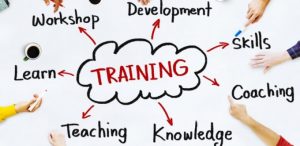Our Mission: Spread ideas
I’ve been asked several times where the inspiration for TED Tips originates, so this week I want to explore that source of inspiration. TED Tips talks TED talks. As such, what are TED Talks?
“TED is a nonpartisan nonprofit devoted to spreading ideas, usually in the form of short, powerful talks. TED began in 1984 as a conference where Technology, Entertainment and Design converged, and today covers almost all topics — from science to business to global issues…”
While TED Talks have been around since 1984, they saw a spike in interest and use correlated to the increase in popularity of YouTube. Most TED talks are recorded, of high quality, and the videos are made easily accessible. Another feature of TED Talks lends itself well for internet consumption. TED talks follow strict guidelines and adhere to high quality standards. No talk can exceed 18 minutes in length… According to TED Talks curator Chris Anderson, 18 minutes is “short enough to hold people’s attention, including on the Internet, and precise enough to be taken seriously.”
I have named this blog TED Tips for similar reasons. I cannot resist a good pun and acronym – so basing the blog name off of my name “Ted” made sense in the context of my job in the Learning Technology Center as a Teaching, Learning, and Technology Consultant. My job title can apply directly to the use of TED as “technology, education, and design” as it applies to higher education. Finally, I find affinity with the mission of the original TED Talks, exploring all ideas and sharing those ideas with others. I hope that this blog lives up to those standards and source of inspiration.
I want to share a couple of my personal favorite TED talks and some of the ideas worth sharing. I recently discovered the following talk on the TED Radio Hour. NPR produces a radio version of the show and the accompanying podcast works wonders during my commute. Podcasts and radio broadcasts keep me thinking and engaged while I can focus driving.
Recently, I was visiting with my goddaughter – a spunky, somewhat awkward, still discovering herself twelve year old. She likes cooking, acting, polar bears, and obsessed with the band BTS. Like many pre-teens, she struggles with confidence and overcoming perceived obstacles, social barriers, and school drama. A version of Megan Washington’s talk entitled: “Why I live in mortal dread of public speaking” played on the TED Radio Hour. I immediately connected some of the themes and strategies outlined in the talk to the struggles of my goddaughter.
The synopsis of her talk reads and I’ll share the embedded link.
Megan Washington is one of Australia’s premier singer/songwriters. Since childhood, she has had a stutter. In this bold and personal talk, she reveals how she copes with this speech impediment—from avoiding the letter combination “st” to tricking her brain by changing her words at the last minute to, yes, singing the things she has to say rather than speaking them.”
The second TED talk I want to highlight is Steven Johnson’s entitled “Where Good Ideas Come From”. I have often share this with students when hoping to provide time for creativity to develop. Contrary to the notion that inspirations strikes in a flash or “Eureka!” moment, good ideas take time to develop and often require clashes with other ideas. Steven Johnson elaborates on this idea in a corresponding book, TED talk, and an even shorter animated version is worth the multimedia experience. I’m including a link to that animated version here:
Finally, I want to share one final TED Tip: There’s a TED app that builds personalized recommendations based on your preferences delivered directly to you. I’d encourage you to check it out and explore more ideas worth sharing.
– Ted Witt
Teaching, Learning, and Technology Consultant
RESOURCES:
https://www.ted.com/
TED Talks referenced:
Why I live in mortal dread of public speaking by Megan Washington. TEDxSydney April 2014 https://www.ted.com/talks/megan_washington_why_i_live_in_mortal_dread_of_public_speaking
Where good ideas come from by Steven Johnson. TEDGlobal 2010
https://www.ted.com/talks/steven_johnson_where_good_ideas_come_from








